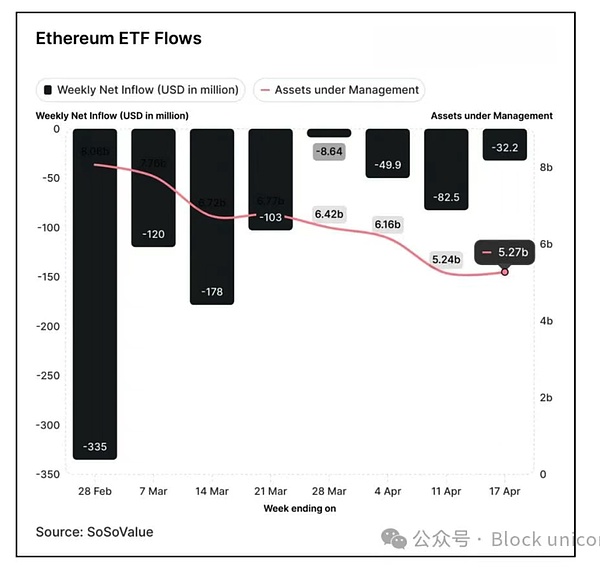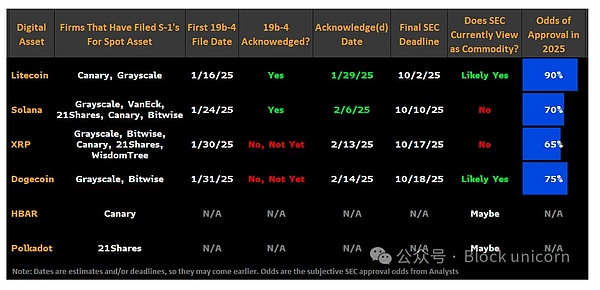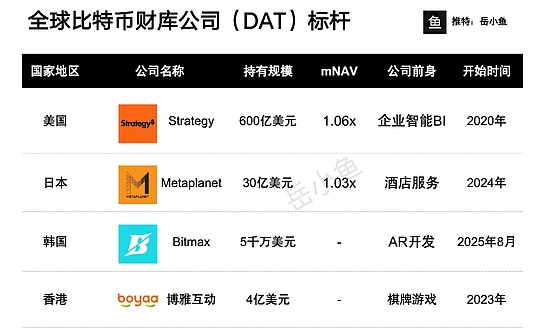
Preface
Last week, Paul Atkins, who was sworn in as the 34th chairman of the Securities and Exchange Commission, took over the most cryptocurrency-related workload in SEC history: applications for more than 70 cryptocurrency exchange-traded funds (ETFs) awaiting review.
Atkins faced his first major cryptocurrency decisions just three days after taking office.He delayed the ruling on multiple ETF proposals until June.
These delays are not surprising.However, these delays highlight the daunting task facing the new crypto-friendly chairman.
Interestingly, funds tracking the second largest cryptocurrency, Ethereum, are losing money at an alarming rate as the altcoin ETF boom is on the rise.
Despite this, fund companies are still competing to apply for various ETFs.From mature altcoins such as Solana and XRP to meme coins such as dogs, penguins, and even Trump coins, Atkins’ work has faced many challenges
This comparison raises an intriguing question: Since the Ethereum experience provides such an unsettling precedent, why are altcoins still competing to apply for ETFs?
ETF applications pile up
Asset Management has submitted ETF applications for at least 15 cryptocurrencies except Bitcoin and Ethereum.
Grayscale alone has applied for funds tracking Solana, Cardano, XRP, Dogecoin, Litecoin and Avalanche.Bitwise hopes to obtain approval from ETFs based on Dogecoin and Aptos, while Canary Capital is particularly active, submitting applications for Hedera, Penguin, and Sui, and recently submitted a pledged TRX (Troncoin) product, which even includes revenue generation functions.

First, a basic question: Why apply for an ETF?
Bloomberg ETF analyst Eric Balciunas recently posted: “To ETF your cryptocurrency is like a band adding songs to all music streaming services. While there is no guarantee that someone will listen, it will make your music appear in front of the vast majority of listeners.”
Simply put, this means providing investors with better accessibility and wider adoption through fund companies.
The impact of this issue goes beyond the cryptocurrency field and also involves political complexity.And we are talking about the complexity involved in U.S. President Donald Trump.
Trump’s Media & Technology Group recently announced plans to invest up to $250 million in cryptocurrency-related ETFs.
The Dilemma of Ethereum ETF
The timing of these applications is particularly puzzling, as they emerge as Ethereum ETFs are experiencing a crisis of investor confidence.
As of April 18, Ethereum ETFs had capital outflows for seven consecutive weeks, with a total of more than $1.1 billion.As of April 11, the size of assets under management plummeted to $5.24 billion, a record low since the launch of these products in July 2024.

This struggle is in stark contrast to Bitcoin ETFs, which recorded nearly $1 billion inflows every day on Thursday and Friday last week, and the price of Bitcoin rebounded to the $95,000 level despite market volatility.
For altcoin investors who want to buy Ethereum ETFs, the experience of Ethereum ETFs raises an unsettling question: If the second-largest cryptocurrency in market capitalization cannot maintain investors’ interest in ETF packaging, then will those unmature tokens still have hope?
Lessons learned from Ethereum
In addition to numbers, the story of Ethereum ETF also involves some fundamental issues, and investors in altcoin ETFs must seriously consider these issues if they want to avoid the same fate.
First of all, there is the cost structure issue, and grayscale ETHE is a typical example.When competitors like BlackRock offer similar investment opportunities at one-tenth of the price, its annual fee of 2.5% is clearly unsustainable.
This expense difference creates a mathematical necessity—over time, high-expense products will perform far less than low-expense products tracking the same asset.This is crucial for investors who plan to hold for many years.
The second is Ethereum’s increasingly complex value narrative.While Bitcoin benefits from its straightforward “digital gold” positioning, Ethereum’s value proposition covers smart contract platforms, DeFi’s settlement layer, NFT market pillars, and potential assets that generate returns through staking – a feature that Ethereum ETFs currently do not have.
This complexity creates marketing challenges.Adoption rates are affected when financial advisors cannot easily explain their investment reasons to clients in one or two sentences.The simplicity of Bitcoin is easily won in this battle.
The third issue is the SEC’s cautious attitude towards pledges.By banning Ethereum ETFs from inclusion in staking proceeds, regulators have deprived of a differentiated feature..This contrast became particularly evident when Canary Capital recently applied for a pledged TRX ETF, indicating that some issuers are already trying to overcome this limitation.
Why still bet on ETFs?
Despite the worrying performance of Ethereum ETFs, the altcoin ETF application boom has not slowed down.This obvious contradiction is driven by several powerful factors that overwhelm the immediate concerns arising from the Ethereum dilemma.
The most important catalyst is the “Atkins Effect”.Paul Atkins’ appointment marks a huge shift in his tenure with Gary Gensler, who is seen by the cryptocurrency industry as a period of regulatory hostility.
With its reputation for supporting innovation and a history of favoring market-driven solutions, Atkins offers issuers an unprecedented opportunity: a viable path to approval.
The data supports this optimism.
Bloomberg analysts estimate that the probability of approval for assets like Solana, Litecoin and XRP is between 75-90%.

Atkins’s leadership actually opened a regulatory window that asset management companies are racing to take advantage of so that it may close.
Institutional demand provides another compelling reason for this ETF boom.According to a March 2025 report by Coinbase and EY-Parthenon, about 83% of institutional investors plan to increase their cryptocurrency allocation this year, with many aiming to invest more than 5% of their managed assets in it.
Each altcoin offers a differentiated value proposition that may resonate more than Ethereum’s complex narrative.
Solana’s ultra-fast deals and growing DeFi ecosystem provide a clear story of efficiency.XRP focuses on cross-border payments and provides a specific use case that is easier to explain to institutional investors.Hedera’s business adopts corporate credibility that it lacks in pure retail cryptocurrencies.
The growth potential of cryptocurrencies with smaller market capitalization also provides compelling reasons for ETF issuers.
While Bitcoin and Ethereum may provide stability, their trillion-dollar market cap limits the upside.If mid-cap altcoins get mainstream adoption, they could deliver more significant returns, attracting growth investors who missed Bitcoin’s early earnings.
Potential market impact
In contrast, the entire spot Ethereum ETF market currently holds approximately $5.27 billion in assets.If two to three major altcoin ETFs meet these forecasts, they may collectively outperform Ethereum ETFs in size within the months after launch, creating a significant market readjustment.This triggers significant market adjustments.
However, institutional capital is spread across multiple cryptocurrency ETFs, and there is also the risk of diluting assets.
This could spread the interests of institutional investors across multiple products.This surge could result in the failure of all altcoin ETFs to reach the critical point in asset management, reducing their attractiveness to institutional portfolios.
For retail investors, the impact is twofold.On the one hand, ETFs provide regulated, secure cryptocurrency investment exposure without the challenge of self-custody.On the other hand, the growing premium paid by ETF investors (through management fees and potential tracking errors) means that their return on investment may continue to be lower than the direct holders of the underlying asset.
If a large number of altcoins are locked into the ETF, it may reduce circulation supply and may intensify volatility in the underlying spot market.
Our Views
As Ethereum struggles, the gold rush of altcoin ETFs reveals that narrative power outperforms performance.Everyone is addicted to an irony: people are flocking to it, and Ethereum, as one of the pioneers, is constantly losing money.What they need to focus on is not copying the Ethereum ETF, but on leveraging their failed experience.
Smart issuers are already planning different routes.
Canary Capital’s pledged TRX application is the most obvious evidence of this strategic shift.By introducing staking proceeds – which is exactly what Ethereum ETFs lack – they are addressing the core structural flaws that have caused a massive churn in Ethereum over the past few weeks.
The “Atkins Effect” just provides an opportunity.
The catalyst is the realization that Ethereum ETFs fail not because they are ETFs, but because they cannot replace native Ethereum.This decision becomes mathematically obvious when investors compare ETHE’s 2.5% fee and zero-staking gains with purely holding Ethereum.
Analysts’ predictions for altcoin ETFs show that this is more than just blind optimism.These predictions suggest that specific altcoins with clearer value propositions can succeed in the absence of Ethereum’s complex narrative failure.
The ultimate biggest winner may be the small-cap token with the greatest room for growth.The trillion-dollar valuations of Bitcoin and Ethereum limit their upside potential, but precisely positioned altcoin ETFs may provide the growth multiple that institutional investors are eager for.
Instead of being a cautionary tale, Ethereum ETF could become a pioneer of sacrifice and pave the way for a more successful second wave.The failure of Ethereum ETFs today will not prove that cryptocurrency ETFs are not working; instead, they will be necessary market feedback to make the next generation work better.







